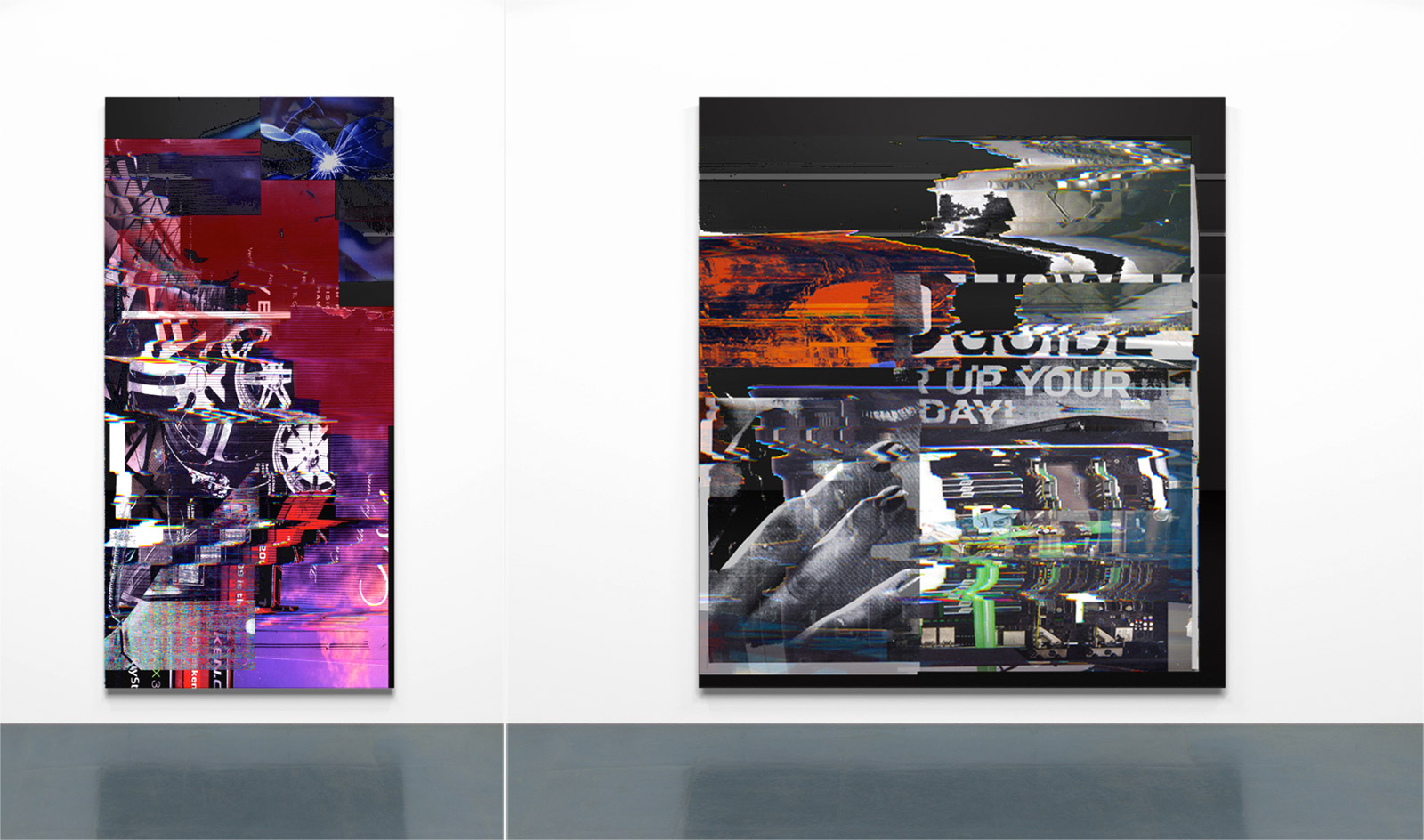Chris Dorland’s “CIVILIAN” at Lyles & King Gallery
Technology-infused artworks in an exhibition on a mission

To step into the Lower East Side’s subterranean Lyles & King Gallery right now means addressing a handful of questions. There, artist Chris Dorland has placed a series of works—eight on panels, four on video screens—that first address the role of machines and technology in art. Second, they assault what the artist refers to as our HD reality or the HD consumer utopia that is NYC. This is something that he believes exists in contrast to the state of the world as a whole. The works speak. They demonstrate awareness of the emotional, ecological and psychic costs of today. Whether or not guests find the works within this exhibition, known as “CIVILIAN,” aesthetically pleasing, there’s so much at play that each piece commands the time required to decode it.
“I want to question this idea of what is a civilian—and citizen even—and what our responsibilities are,” Dorland explains to CH. “I would imagine a fair amount of people feel powerless right now. It’s hard to affect change. We are in a system that is so bloated and complex. The idea of reality getting more complicated is something I’m interested in as an artist. Then it’s about getting people to address their own relationship to reality.” Even a glimpse at the powerful images and videos he has on display makes this evident. Through art, and his distinct aesthetic vision, Dorland wants people to wonder.

Dorland refers to his studio as an image factory. There, desks are covered with piles of images that he will tinker with. “There are a lot of machines, printers and scanners,” he explains. “The studio has no internet. It’s offline and outdated. The machines glitch out; they’re idiosyncratic. I spend my time processing images and cobbling them together.” In essence, Dorland’s an instigator, coaxing further errors out of his machines. He manipulates and allows the machines to manipulate, building composites of glitches, layers of source materials and collections of themes. His greatest tool is this arsenal of machines. “I find myself in these weird situations where I am thinking about the machines,” he says—thinking about how he can trick them or hack them into doing something more.
After spending months collecting and making images, the artist formats them for printing, which is a process that requires sizing them up. Before printing, he pulls much of the black coloration out, as he prints on Alumacore—a black, powder-coater inorganic material. This results in a reflective element to work, wherever the levels of ink have not risen. Because of the material, and despite their size, they weigh almost nothing. One is simply left with a chaotic, almost violent image. Then Dorland begins to play around with video to complete the cycle of work for an exhibition.

Dorland has built out the space to restrict physical passage from entrance to lobby and one room to another—though everything is visible from all angles. With one particular decision, he’s decided to leave the video cables exposed. “Plenty of people have seen exposed cables,” he explains. “I mean, that’s the story of most of our lives. But it’s the idea of seeing through the technology here, or seeing behind the screen,” he adds, rather than tucking things away neatly. This is just another facet that makes the exhibition worth exploration. From the videos and images to the install, every component must be unpacked—and this is not only intriguing, it’s a superb demonstration of the depths of gallery shows today. “Art is at its best when it lends itself to many interpretations simultaneously,” he concludes. This is conveyed, succinctly, through the powerful exhibition he’s placed before us.
“CIVILIAN” runs today through 11 February at Lyles & King, 106 Forsyth St, NYC.
First two install images courtesy of Lyles & King, last image courtesy of Chris Dorland












